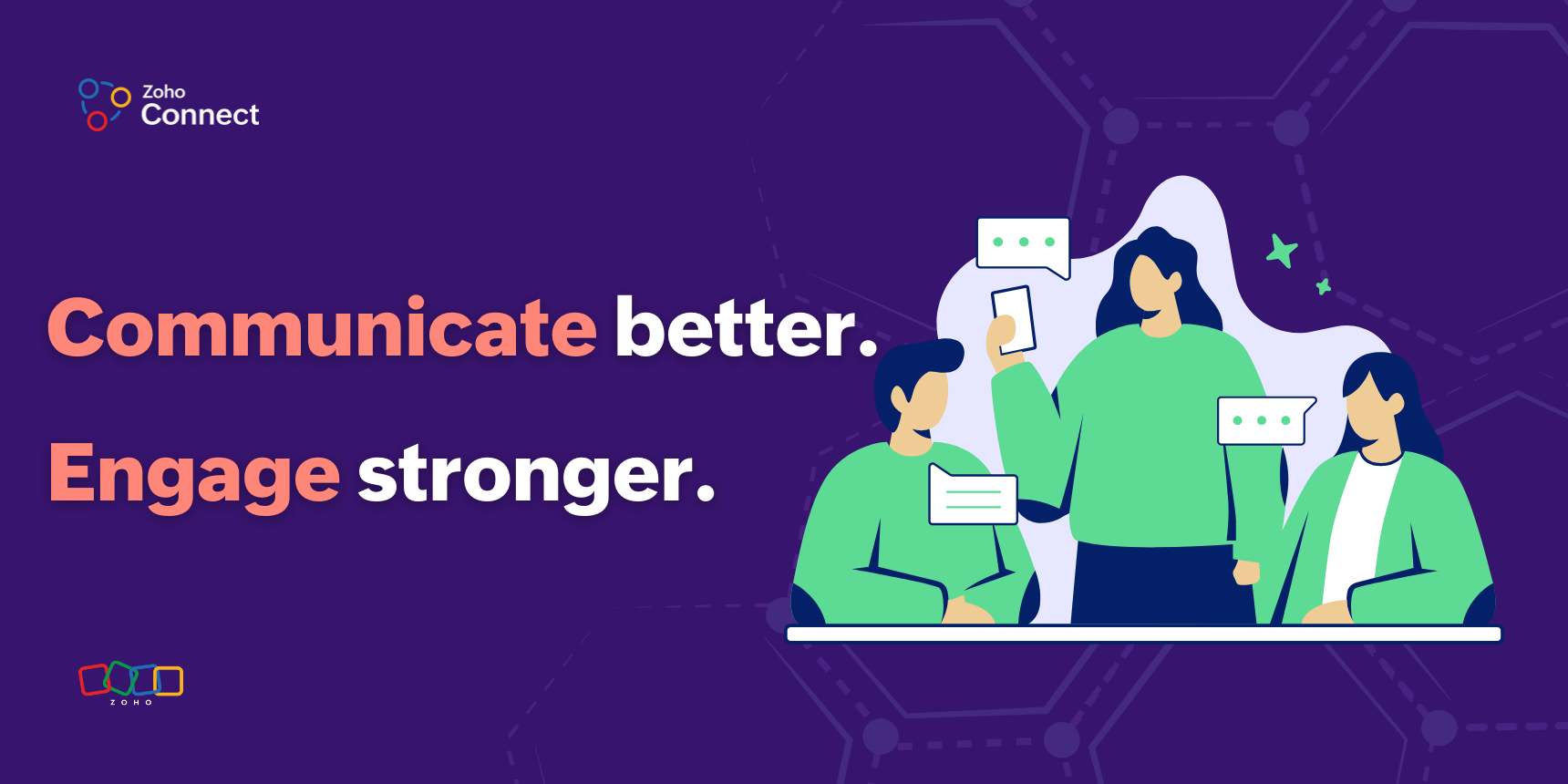- HOME
- Internal Communications
- How to help employees embrace change through better communication
How to help employees embrace change through better communication
- Last Updated : November 10, 2025
- 53 Views
- 5 Min Read

Change is inevitable in any organization. Whether it’s a new leadership structure, a process overhaul, or a digital transformation, change is what keeps businesses moving forward. However, while leaders often focus on implementing the change itself, one thing that makes or breaks the success of the transition is how it’s communicated to employees.
Communication during change isn’t just about sending an announcement or sharing a new policy, it’s about helping employees understand, adapt, and stay motivated through the transition. A well-thought-out communication strategy turns uncertainty into trust and resistance into cooperation.
So, how can organizations ensure that their change communication is both effective and empathetic? Let’s dive in.
What is organizational change?
Organizational change refers to any transformation within a company that affects its structure, culture, strategy, processes, or people. This could mean anything from adopting a new technology to merging with another company or redefining the organization’s goals.
Change can be:
Structural: Changes in hierarchy, leadership, or reporting lines.
Strategic: Shifting business goals or entering new markets.
Technological: Introducing new software, tools, or systems.
Cultural: Altering company values, behavior expectations, or communication styles.
While the intent of change is always to improve, it often brings uncertainty. Employees may worry about their roles, job security, or how the change impacts their day-to-day work. That’s why clear, honest, and timely communication is vital; it helps employees see the “why” behind the change and the benefits that come with it.
What is change management communication?
Change management communication is the process of sharing information, updates, and expectations with employees during times of change. It ensures that everyone is on the same page, understands the reasons for the change, and feels supported throughout the transition.
It’s not just about sending one big announcement; it’s a continuous dialogue that involves:
Explaining the reason behind the change.
Outlining how it will be implemented.
Addressing employee concerns and feedback.
Providing guidance and support through the transition.
In simple terms, it’s about making change feel like a journey with employees, not something that’s being done to them.
Why effective communication is important for change management
Communication is the bridge between leadership’s vision and employees’ understanding. When handled poorly, change can lead to confusion, frustration, and even disengagement. When handled effectively, it fosters transparency, trust, and collective ownership.
Here’s why it matters:
It builds trust and reduces resistance. Employees are more likely to accept change when they understand the reasons behind it. Transparent communication reduces fear and speculation, building confidence in leadership decisions.
It encourages employee engagement. When employees feel involved and informed, they’re more engaged in the process. They see themselves as contributors, not bystanders, in the company’s growth journey.
It prevents miscommunication and rumors. Without proper communication, people fill in the blanks with their own assumptions. Consistent updates help prevent misinformation and unnecessary panic.
It aligns everyone with the company’s goals. Clear communication helps employees understand how the change aligns with the organization’s mission and how their role contributes to the bigger picture.
It boosts morale and productivity. When employees know what’s happening and why, it reduces anxiety and helps them stay focused on their work instead of worrying about the unknown.
In short, communication during change isn’t just a management duty; it’s a leadership responsibility.
Ways to communicate organizational change to employees effectively
1. Be transparent from the start.
Don’t wait until the last moment to share news about a major change. Be open and upfront about what’s happening, why it’s happening, and what employees can expect next. Even if you don’t have all the answers yet, honesty goes a long way in building trust.
Example: “We’re introducing a new project management system to simplify our workflows. We understand this may take time to adjust, but it will help reduce repetitive tasks and improve collaboration in the long run.”
2. Explain the “why” behind the change.
People respond better when they understand the reason behind the decision. Instead of just saying what is changing, communicate why it’s important for the company and for employees individually. When employees see how the change benefits them, like simplifying processes, improving efficiency, or creating growth opportunities, they’re more likely to embrace it.
3. Use multiple communication channels.
Different employees prefer different communication methods. While some respond to formal announcements, others may engage better in interactive sessions or social intranet discussions.
Use a mix of:
Emails and newsletters for official updates.
Town halls or all-hands meetings for leadership discussions.
Internal platforms like Zoho Connect for open conversations, polls, and feedback.
FAQs or knowledge bases for clarifying doubts.
This ensures that the message isn’t just heard but understood across all levels.
4. Encourage two-way communication.
Change shouldn’t feel one-sided. Encourage employees to ask questions, share their opinions, and voice their concerns. Listening shows that leadership values employee perspectives.
You can do this through:
Q&A sessions.
Discussion forums.
Live chats during town halls.
Feedback forms.
A feedback-driven approach turns communication into collaboration.
5. Involve leaders and managers.
Employees often look up to their direct managers for clarity during uncertain times. Equip managers with the right information, tone, and tools to communicate change effectively within their teams. When messages come from familiar faces, like team leads or department heads, they feel more personal and credible.
6. Share the change journey, not just the outcome.
Keep employees informed at every stage of the change process. Share small updates, celebrate milestones, and recognize efforts along the way. This builds a sense of progress and shows that change is an evolving journey, not a sudden event.
7. Offer training and resources.
If the change involves new tools, systems, or processes, provide hands-on training and learning materials. Support helps reduce fear and empowers employees to adapt faster.
Example: Provide learning sessions on Zoho Connect where employees can discuss challenges, share tips, and learn from each other.
8. Acknowledge emotions and be empathetic.
Change can be stressful. Recognize that some employees may feel anxious or uncertain. Show empathy through your tone and messaging. Simple gestures like checking in on how employees are coping or sending appreciation messages go a long way in making them feel valued and heard.
9. Celebrate wins and reinforce the vision.
Once the change has been implemented, celebrate successes no matter how small. Recognize employees who helped make it happen and communicate how the change has positively impacted the organization. Celebrating milestones reinforces the purpose and reminds everyone why the change was worth it.
Conclusion
Organizational change is never easy, but with the right communication strategy, it doesn’t have to be overwhelming. The key lies in clarity, consistency, and connection. When employees feel informed, included, and inspired, change transforms from a challenge into a shared opportunity for growth.
And that’s where Zoho Connect makes a real difference.
With Zoho Connect, you can bring your entire workforce together on a single platform, making communication transparent, timely, and engaging during every phase of change. From hosting virtual town halls and sharing updates to gathering employee feedback and fostering discussions, Connect helps your organization stay aligned, informed, and united.
Change begins with conversation; start yours today with Zoho Connect.


